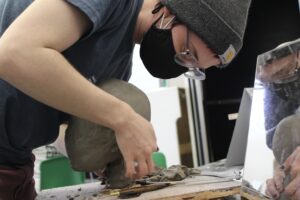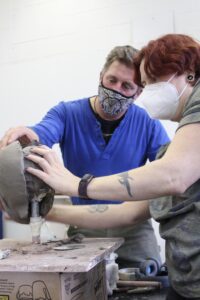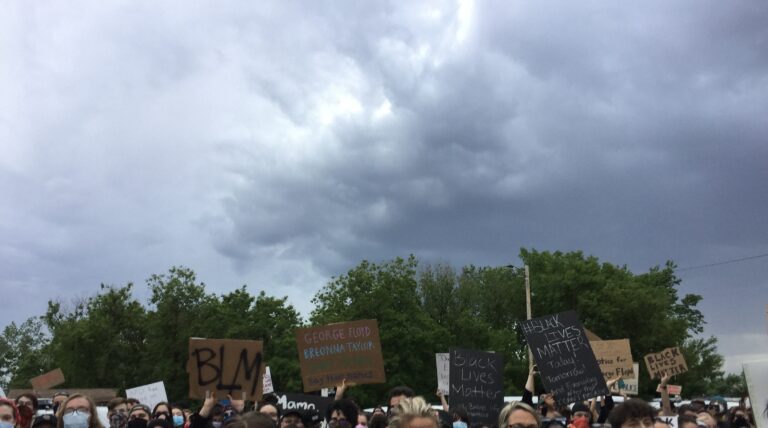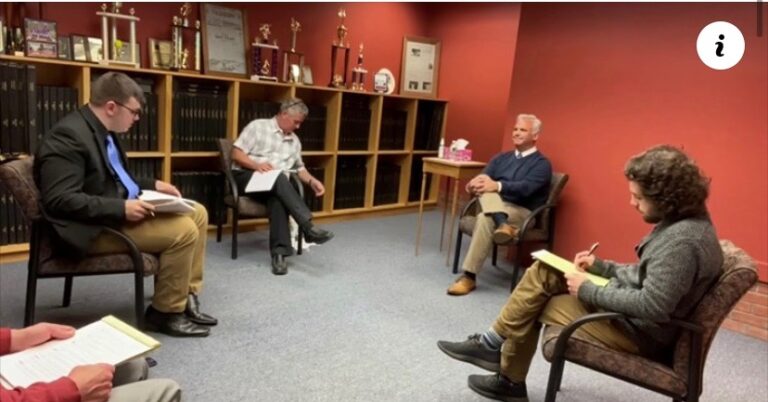Looking back on the one-year anniversary of the shutdown


March 13, 2020, was a big day in U.S. history. Coronavirus officially became a threat to the United States.
Grocery store shelves became empty. A National Emergency was called. And Castleton University announced the school would be closed for two weeks to flatten the curve – so we thought.
For 10 months, Castleton became a ghost town. Some students returned to their dorms for the fall semester, but many stayed home working grueling hours on their laptops.
Through computer screens, students and professors have done their best to power through these tumultuous times. As students came back to campus and some finally get to sit in a classroom, many are reflecting on this past year.
Jay Marcy is a senior majoring in graphic design while minoring in studio art and creative marketing. Marcy recalled the days after the school announced the closure.
“I had to come to campus to pick up a bunch of art supplies for all of my art classes,” he said. “And I remember seeing professors and talking to people, and none of us were wearing masks or anything, which seems wild right now as we absolutely should have been.”
He remembers talking with professors and other peers about it being very weird and unexpected.
“No one thinks they’re going to live through a pandemic. That’s just not something that happens. Then it happened, and none of us knew how to deal with it,” he said.
Marcy says being back on campus makes him feel like things will be back to normal soon. When asked about online classes, Marcy chuckled to himself. He said they have been good and bad.
After months of remote learning, Marcy is now back on campus.
“Oh, it’s weird … and I don’t really like it,” he said. “Working as an art student, I’m usually in the art building, in the art studios, in the computer lab. A lot of very collaborative spaces we share ideas and the things we use, we share everything. So it’s weird to try to be back in that because it feels wrong.”
Marcy describes the year as the longest of his life.
“It feels like It was five years,” he said.
He even admitted to thinking back on the past months since students and professors were sent home.
“I think back to who I was, what I was thinking about, what I was working on, what I was occupied with a year ago when everything shut down and I feel like a totally different person now,” he said. “But yeah, it has been a long year.”
Joel Atutor is a senior on the men’s soccer team. He also majors in graphic design. When the school closed its doors, Atutor faced some struggles.
“I feel like I had no help from teachers or anything,” he said, adding that he felt “left alone.”
He said it was hard to study with distractions at home. When it comes to online classes, he described them as hard and reiterated how there was no help.
Atutor is now back on campus, where he is taking an open studio art class.
“I think it’s a little better because I live on campus, and there’s a lot of help and materials to use,” he said.
Atutor chuckled a bit then sighed when asked about the anniversary coming up.
“It’s a little overwhelming, to be honest. COVID is not good,” he said.
A survey done by Castleton University’s EDU 6710 Research Team in November of 2020 showed that many students at Castleton faced some of the same struggles as Atutor.
Only 50.4% of participating students felt satisfied with how CU adapted to remote learning. 58.2% of student’s respondents reported that they were being assigned more homework than prior to Covid-19. And 60.9% said that it takes even longer to finish their assigned work.
This data shows that a majority of students were not satisfied with the transition to remote learning. And it also shows that students struggled as their workload grew.
But students weren’t the only ones who have faced adversity during these times. Art department chair Oliver Schemm described the day of the closure as if “a giant gate had shut.”
“There was so much unknown and this sort of apprehension, but you couldn’t dwell on it because you had to do your job – fast,” he said. “It was a mad rush.”
Schemm said he noticed many professors were helping each other and said that it was like all the professors and students were on the same team.
“I was amazed how relatively smoothly it went,” he said.
As an art professor, Schemm had to replicate the collaborative art classes on campus online.
“It’s okay. It’s not what I signed it up for. We make it work, but it’s so much better being in person. The point is the connection; the point is the conversations you can have,” he said.
Schemm says he very glad to be back in the classroom.
“It’s a precursor to the real thing,” he said.
Schemm also said he can’t believe it has only been a year since the closing because so much has happened.
“I’m pretty proud of Vermont. I’m pretty proud of the students engaging online,” he said. “We’re here and were going to keep ongoing, and I’m proud of Castleton.”








